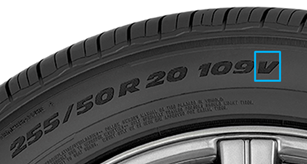TPMS stands for “Tire Pressure Monitoring System.” The TPMS low tire pressure indicator is a yellow symbol that looks like a tire cross-section with an exclamation point. (reference image). The symbol illuminates on the dashboard instrument panel in order to alert you of a low tire pressure condition in one or more tires. Even though a TPMS can deliver alerts when properly maintained, it’s not a replacement for manual air pressure checks and may still allow your tires to become significantly underinflated. Toyo Tires recommends checking tire pressure, including the spare, at least once a month and before every long road trip.
TPMS is required equipment on model year 2008 and newer passenger cars, light trucks and vans with a gross vehicle weight rating (GVWR) of 10,000 pounds or less. Some vehicles manufactured prior to 2008 are also equipped with a TPMS so check your owner’s manual if you are unsure whether your vehicle has this feature.
When changing tire size from the original equipment size, new tire pressures must be calculated and your TPMS system may need to be recalibrated to meet the new recommended air pressure.
Not sure what to do when the light comes on? Does it go on and off intermittently? Learn more about TPMS.

